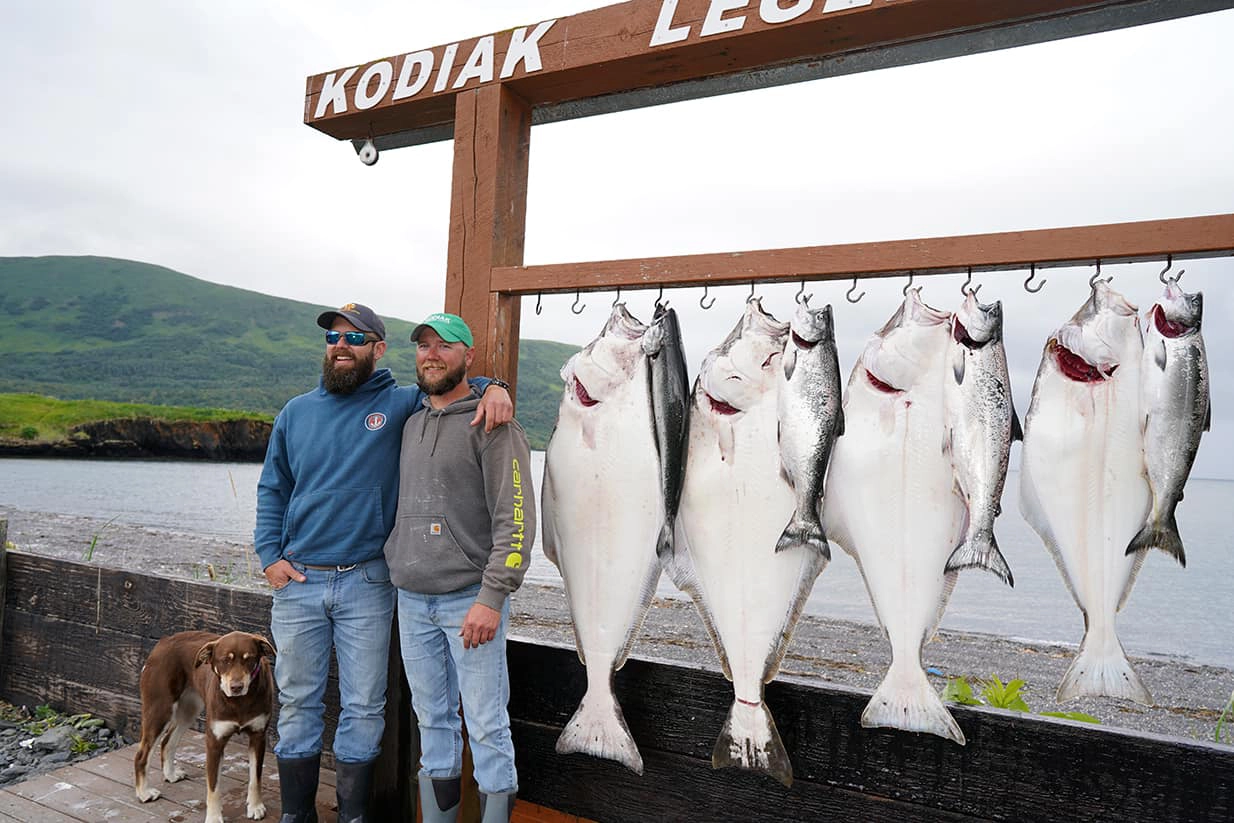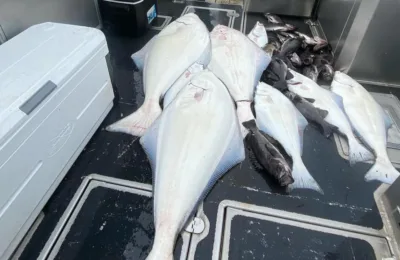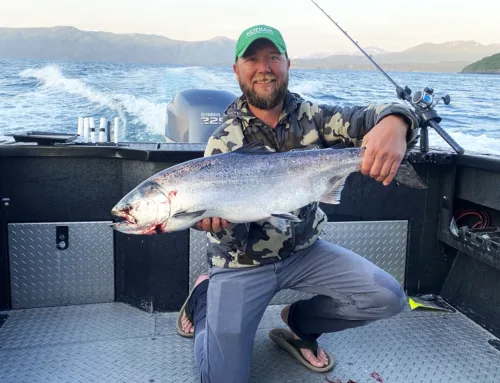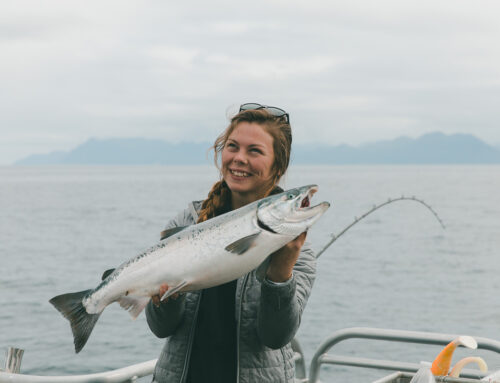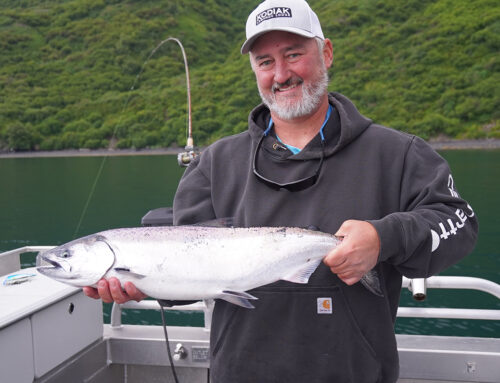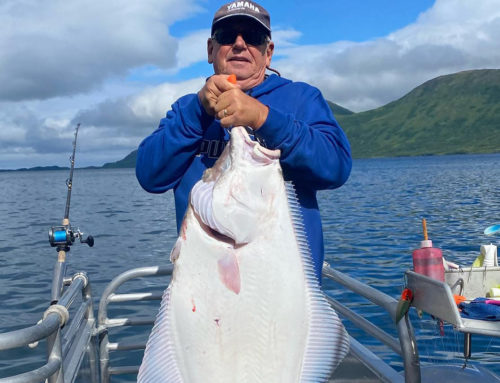Alaska halibut is some of the best tasting fish in the ocean. It’s an abundant bottomfish that is found in much of Alaska’s saltwater. Anglers from all over the planet come to Alaska to catch this fish for both sport and sustenance. At our lodge, we are experts at catching halibut, and it’s a pretty rare occurrence that anglers who visit and fish for halibut don’t catch. With that in mind, it pays to be prepared for your upcoming Alaska halibut fishing adventure. Here’s five tips to consider.
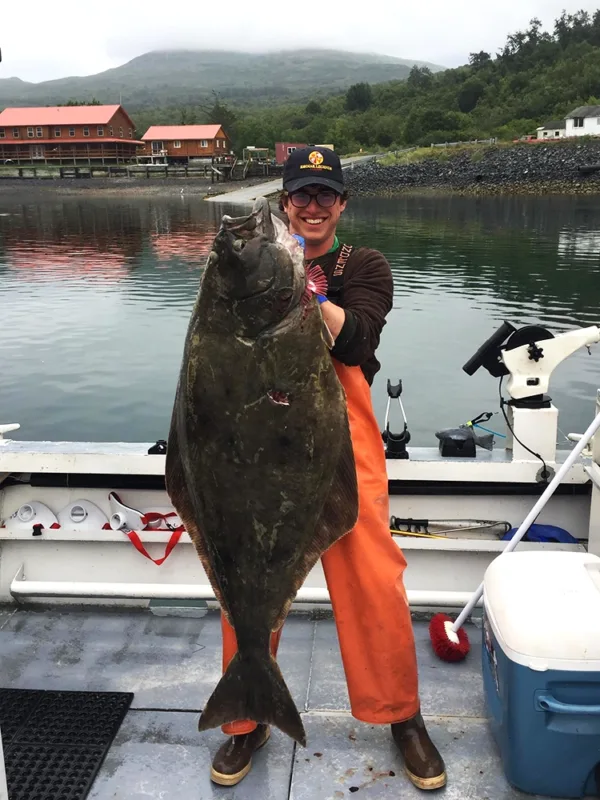
Tip #1: Packing
It gets surprisingly cold on the saltwater, even when ambient temps on land are nice and toasty. Pack layers that you can put on and take off. Bring a stocking cap; you lose a lot of heat from your head. Always bring quality rain gear on any Alaska fishing adventure.
Tip # 2: Getting your Alaska halibut home
If at all possible, check the frozen fish as baggage on commercial airlines. Some people choose to use FedEx so they don’t have to deal with moving 50-pound fish boxes, but it is significantly more expensive. Another option is to use an expediter, like Alaska Trophy Expediters in Anchorage (aktrophyexpediters.com).
Tip #3: Fighting big, strong halibut
Halibut are about 70% muscle, and very strong. Average fish are in the 20-pound range, and these will put up quite a fight. Fish in the 50-pound range will test your strength. And occasionally we hook and land fish over 100 pounds. We respectfully ask that you release any Alaska halibut over 100 pounds, as these are prime, female, breeding fish that will make future generations of halibut. No matter the size of the halibut, when fighting one, slow and steady wins the battle. The harder you pull, the harder they pull back, and the wise angler who tries to gently ease an Alaska halibut to the surface will win the day, and require less ibuprofen in the evening.
Tip #4: Cooking halibut
There are tons of websites to find recipes for Alaska halibut. Our partners at fishalaskamagazine.com offer an extensive recipe section. No matter the recipe you choose, avoid over cooking halibut as it goes from succulent to dry rather easily. When you hit the sweet spot, there’s little better seafood than a perfectly cooked piece of Alaska halibut.
Tip #5: Learn about the species
Pacific halibut are an interesting fish and the largest member of the flatfish family. They overwinter in deep water where they spawn, and move to shallower depths in the spring to start feeding. They are opportunistic predators that will eat many different types of prey including: salmon, crab, herring, cod, octopus, greenling and squid. The record Alaska halibut is over 400 pounds, and larger ones have been caught commercially. Most fish over 100 pounds are females. Large spawning females can hold several million eggs. To learn more about Alaska halibut visit: adfg.alaska.gov.
Get ready for some fun fishing, and even better eating when you book an Alaska halibut trip with us and come fish the fertile saltwaters of Kodiak Island.


